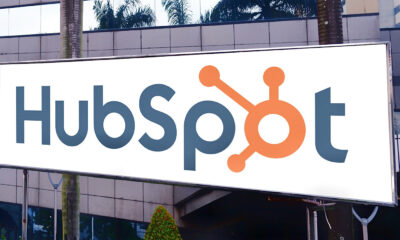When working with agile marketing teams, leaders should adopt a values-based approach that includes empowering their team members. Place individuals and interactions above processes and tools, and stop treating marketers like kindergarteners, said agile marketing expert Stacey Ackerman at The MarTech Conference.
Micromanaging is rampant in marketing. Being an effective leader means treating team members like adults.
“We really want to empower them to be able to work individually and think about how they can really grow and form,” said Ackerman.
To accomplish this, Here are some guidelines on leading through empowerment.
Present your team with a problem, not a solution
Don’t lead with a command. Instead, present the problem and allow your team to formulate the remedy.
For instance, sales are down. Start there. Your team might suggest sending out a direct mail piece. Or maybe posting a video on YouTube is preferred. Give your talented team the opportunity to help solve the problem with their creativity.
“If we always give the teams the solution, they’re not going to be empowered to have that creativity that we need,” said Ackerman.
Read next: How marketers embrace agile ways of working
Brainstorm for a solution
To arrive at the right solution, draw on the creativity of the entire team through a brainstorming session.
“It’s a good use of time,” said Ackerman. “We typically run our teams on about 110% capacity to just execute, execute, execute, and the problem is we don’t account for [better use of] time [through] brainstorming.”
She added, “Brainstorming is really where the magic happens, and building this into the way we work and allowing teams to be part of that solution to your problem through brainstorming is very empowering and gives you great results.”
Give your team space to solve
Don’t rush to a solution. Let your team think about the problem, brainstorm, and problem-solve in their own time.
“If we’re always solving the problems for the team, they no longer feel empowered and they really can’t grow,” said Ackerman.
And when a team member comes to a leader with a problem, the leader could always ask this member what they think about a solution. This gives the team an opportunity to solve problems on their own. The result? Better problem-solving all around.
Ask your team for the data
Remind team members about the importance of past experiences. It’s all in the data. How did similar campaigns perform in the past? Give them an opportunity to present the data to back their solution.
“A lot of opinions happen in marketing,” said Ackerman.
“If you come back to the team member and ask how it performed, they have to own that they have to look at it. They start to become more results-oriented.”
Trust the team to own the solution and deliver great work
Trust is built over time. If you don’t have it, then leaders are checking all of their team’s work without giving ownership to team members.
It doesn’t mean that a leader will be entirely hands-off on a presentation made to the board of directors. But maybe there are smaller projects that don’t need so much micromanagement.
“I ask you to examine yourself and think, ‘what is the worst thing that could happen?’” said Ackerman. “Is there something that team members are doing to break your trust? What would make you feel more comfortable? Are there things that the team could experiment on more that are maybe less risky?”
More leeway can garner more trust across the team. And where there’s trust, there’s more ownership, creativity and growth.
Get the daily newsletter digital marketers rely on.








![Holistic Marketing Strategies That Drive Revenue [SaaS Case Study] Holistic Marketing Strategies That Drive Revenue [SaaS Case Study]](https://articles.entireweb.com/wp-content/uploads/2024/09/Holistic-Marketing-Strategies-That-Drive-Revenue-SaaS-Case-Study-400x240.png)
![Holistic Marketing Strategies That Drive Revenue [SaaS Case Study] Holistic Marketing Strategies That Drive Revenue [SaaS Case Study]](https://articles.entireweb.com/wp-content/uploads/2024/09/Holistic-Marketing-Strategies-That-Drive-Revenue-SaaS-Case-Study-80x80.png)






![YouTube Ad Specs, Sizes, and Examples [2024 Update] YouTube Ad Specs, Sizes, and Examples](https://articles.entireweb.com/wp-content/uploads/2024/06/YouTube-Ad-Specs-Sizes-and-Examples.jpg)















You must be logged in to post a comment Login